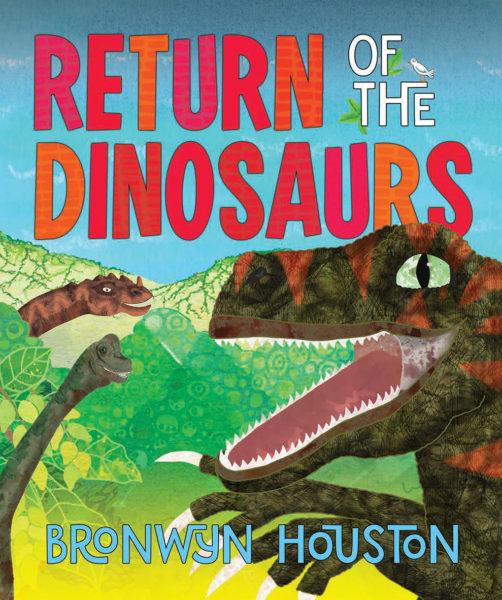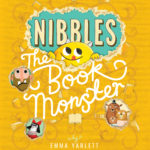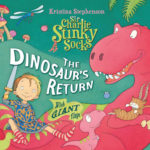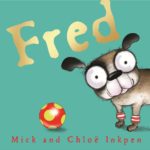This resource is great for:
Using picture books as your starting point for creating cross-curricular projects.
Summary:
A demonstration of how you can use the stories, characters and illustrations from the picture books in the Book Festival’s Baillie Gifford Schools Programme to create a multi-disciplinary project, covering different curriculum areas from the Curriculum for Excellence.
Introduction:
Want to expand on your visit to the Book Festival with younger primary school pupils? We’ve come up with some ideas to help you develop cross-curricular projects, taking inspiration from the picture books featured in the Baillie Gifford Schools Programme. Use these as your starting point and who knows where your project will take you!
Activity – Creating a Cross-Curricular Picture Book Project
Part One – Literacy
A good place to start is by reading the chosen book! Read the book
for understanding and fun the first time, using voices and looking at the pictures, so that pupils can enjoy the story and characters.

On a second reading, pupils could practise reading aloud, taking turns reading a word, sentence or page. If they’re struggling, take clues from the pictures. Afterwards, talk through the book, asking pupils to use their own words to tell the story.
Lots of picture books use rhyme to tell the story. Take a look at Jim Field’s wonderful Oi Cat!, Oi Dog! and Oi Frog! (see p.31 in the Schools brochure). Use the books as inspiration for making up your own silly rhymes, then illustrate them.
Part Two – Art and Design
The pictures in many books are created using different mediums. Look closely at the pictures – can you tell which materials were used to make them? They might be painted, drawn or collaged.
 Bronwyn Houston uses collage to great effect in her books about the natural world, Return of the Dinosaurs and Counting Aussie Animals in my Backyard (see p.22 in the Schools brochure).
Bronwyn Houston uses collage to great effect in her books about the natural world, Return of the Dinosaurs and Counting Aussie Animals in my Backyard (see p.22 in the Schools brochure).
Make your own picture of one of the characters and their environment using either collage or a different medium.
It might be fun to use materials mentioned in the book – for example, using real wool in a picture of Kasia Matyjaszek’s Stockton the knitting cat (see p.8 in the Schools brochure) – or natural materials that you’ve foraged such as bark, leaves and grasses.
Part Three – Expressive Arts
Picture books are a great stimulus for role play and drama. Read your chosen book and make up actions or sounds for every time you hear a character’s name. You could add musical instruments, costumes or puppets if you have them (or make them yourselves!).
Depending on the age of your group, you could choose a scene from the book and make up your own dialogue. You could even imagine a scene between characters which isn’t shown in the book. Inviting parents or other pupils to watch your performance is a great opportunity to give pupils presentation experience and can boost confidence.
Kristina S tephenson’s action-packed Sir Charlie Stinky Socks books are a great starting point for dramatic performances – there’s so much going on! (See p.13 in the Schools brochure). Nibbles: The Book Monster by Emma Yarlett would be lots of fun too as Nibbles chomps his way into lots of fairy tales (see p.24 in the Schools brochure).
tephenson’s action-packed Sir Charlie Stinky Socks books are a great starting point for dramatic performances – there’s so much going on! (See p.13 in the Schools brochure). Nibbles: The Book Monster by Emma Yarlett would be lots of fun too as Nibbles chomps his way into lots of fairy tales (see p.24 in the Schools brochure).
Part Four – Health and Wellbeing
For many children it can be easier to talk about the emotions of a character, rather than their own. Talk about how you think characters might feel at different parts of the book. Are there parts where they might feel sad, scared, angry or alone? Talk about what you could or would do if you were the character, then use your responses to write, act out or draw alternate endings.
Friendship often plays an important part in picture books and looking at how the characters treat each other can lead to discussions about consideration for others. Unusual friendships can also prompt discussion about accepting those who are a bit different from you.

Good books to start talking about feelings with young children include I Want My Dummy! by Tony Ross (see p.7 in the Schools brochure), Dylan the Shopkeeper by Guy Parker-Rees (see p.33 in the Schools brochure) and the Sir Charlie Stinky Socks series (see p.13 in the Schools brochure).
Part Five – Social Studies
Some stories might be set in, or make reference to, the past such as Return of the Dinosaurs by Bronwyn Houston (see p.22 in the Schools brochure) or the Sir Charlie Stinky Socks series by Kristina Stephenson (see p.13 in the Schools brochure). Talk about how you can tell that these stories are set in the past. How is life in the story different from life today? You could take a trip to a museum to see real artefacts from that time, or try your hand at writing your own story (or inventing and drawing a character) set in the past.
 Picture books can also be great for introducing different jobs and local organisations. In Guy Parker-Rees’ Dylan adventures, Dylan tries out lots of different roles (see p.33 in the Schools brochure).
Picture books can also be great for introducing different jobs and local organisations. In Guy Parker-Rees’ Dylan adventures, Dylan tries out lots of different roles (see p.33 in the Schools brochure).
You could explore different jobs by using role play. Introduce play money to shops or business games, to get pupils carrying out simple maths. Role play could become real life experience by making or collecting things to sell at a stall at a school event. Ask families to donate second-hand books or make your own bookmarks, then act as shopkeepers to sell them. The money you raise could go towards your trip to the Book Festival (or ice-creams once you’re there!)
Part Six – Sciences
Lots of picture books look at animals and the natural world (to varying degrees of reality!) Use picture books featuring animals to start talking about environments, lifecycles and food chains.
Look at some of the animals in the following books:
- Mick and Chloë Inkpen’s Fred (see p.28 in the Schools brochure)
- Bronwyn Houston’s Counting Aussie Animals in my Backyard (see p.22 in the Schools brochure)
- Guy Parker-Rees’ Dylan series (see p.33 in the Schools brochure)
- Kasia Matyjaszek’s I am a Very Clever Cat (see p.8 in the Schools brochure)
Introduce the idea of anthropomorphism – how some animals in books appear to have human characteristics. Which qualities of the characters are animal, and which are human? Draw or collage the animal in their natural habitat, or as a more human character – then compare them with the character in the story.

Further information:
You can find more information on all of our picture book events for young pupils in our 2017 Schools brochure.
Our Career-long Professional Learning events also aim to give you inspiring new ideas to try out in the classroom. Two events which you may want to look out for are:
Building on Author Events (17 August) – Literacy specialist Georgi Gill shares tips and ideas for activities to help you harness the enthusiasm of your pupils and maintain momentum when you’re back in the classroom.
Picture Books as Philosophy Hooks (28 August) – Exploring how picture books can be used to introduce philosophy to children and promote their questioning.
For more information on all of our CPL events see p.5 in the brochure or take look at our CPL page.
